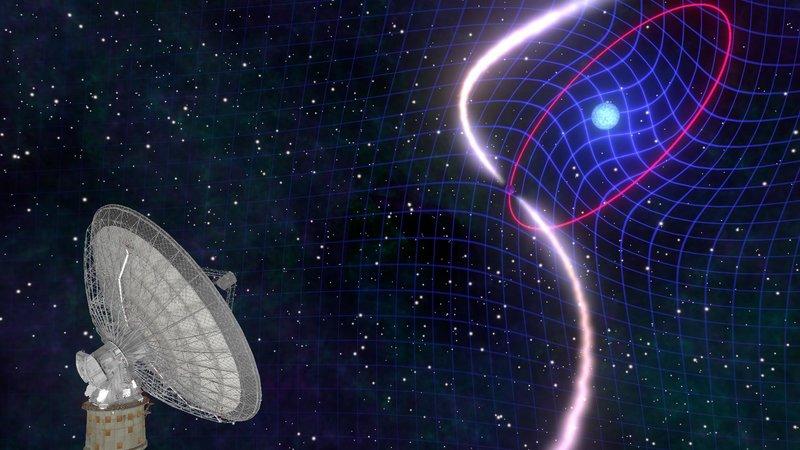Astronomers detect distant space-time ‘dragging’ for the first time

According to Einstein’s general relativity, the rotation of a massive object drags the space-time in its vicinity. Using a pulsar orbiting a white dwarf, the team were able to detect for the first time this swirling of space-time around the fast-rotating object.
The results, published in this week’s issue of Science, involved scientists at the Max Planck Institute for Radio-astronomy in Germany, the SKA Organisation, Swinburne University in Australia, Auckland University of Technology in New Zealand and University of Aarhus in Denmark.
Radio signals from pulsars act like exceptionally accurate clocks, so any observed changes provide a precise measurement of the object’s motion. In this study, the gravitational effect of the white dwarf resulted in a change in the pulsar’s path, known as Lens-Thirring precession (named after the two scientists who predicted this effect in 1918), of around 150km over 20 years. The observations were conducted using two SKA pathfinders: CSIRO’s Parkes Telescope and the Molonglo Observatory Synthesis Telescope.
Using the two telescopes, the team were able to measure the arrival times of the pulsar signals. “We could track the pulsar in its orbit with an average ranging precision of 30 km per measurement, over a period of almost twenty years” explained Dr. Vivek Venkatraman Krishnan, the lead author.
New and upcoming radio telescopes such as MeerKAT and the SKA will play a central role in understanding how Einstein’s theory is at play in such natural laboratories. “With the SKA expected to detect more exotic binary systems like this one, we’ll be able to investigate many more effects predicted by general relativity” concluded Dr. Evan Keane, co-author and scientist at the SKA Organisation in the UK.
Read more on the Max Planck Institute for Radio-astronomy website.




